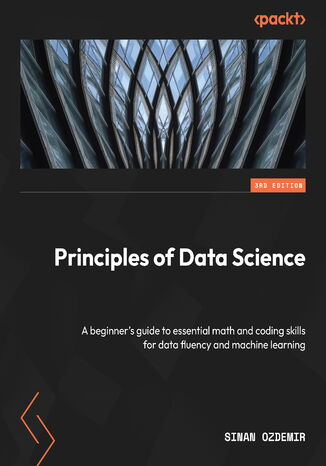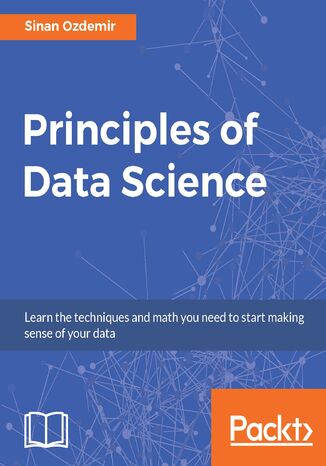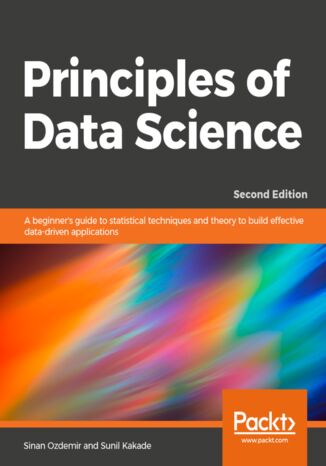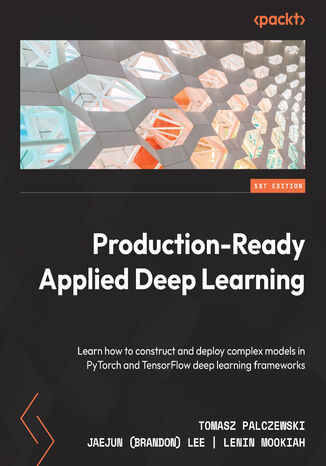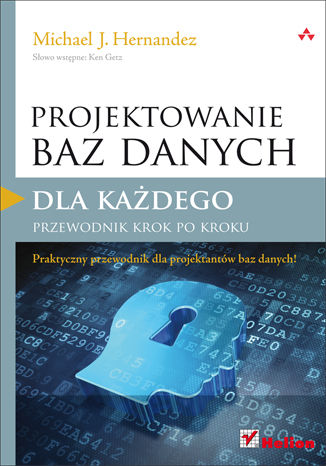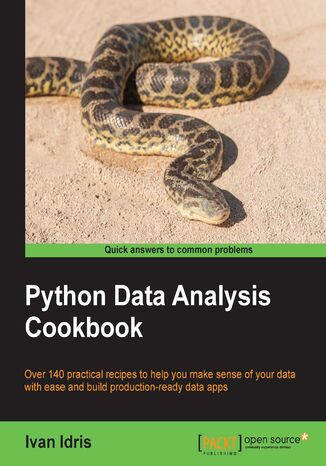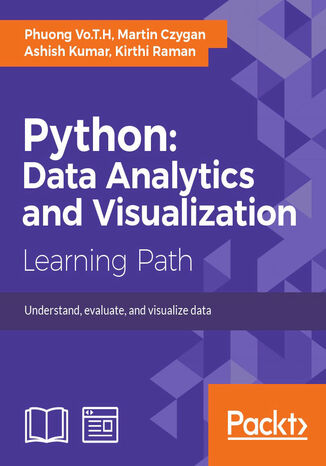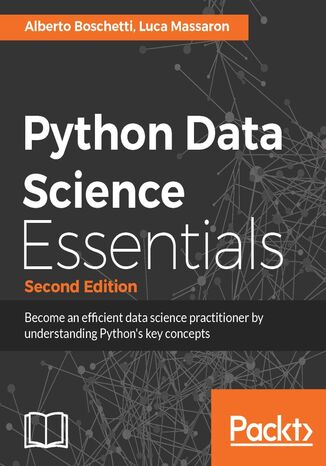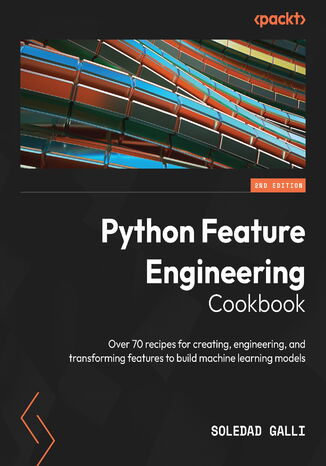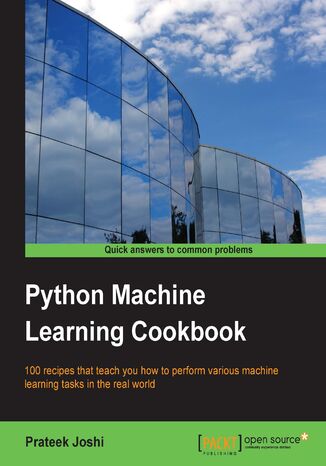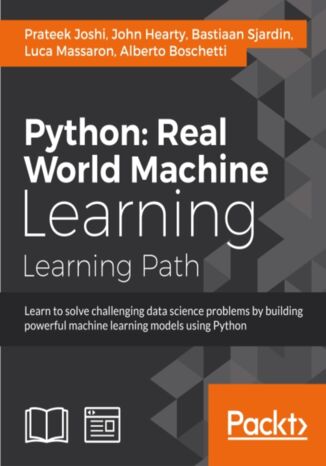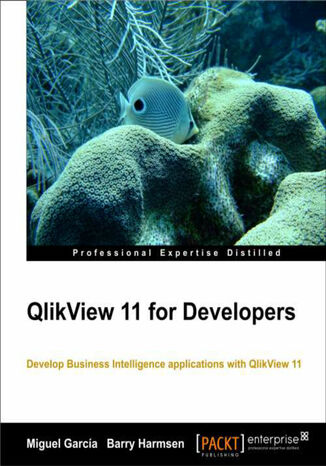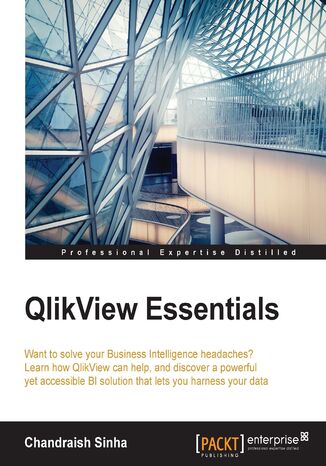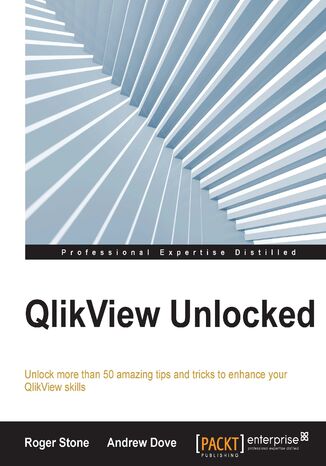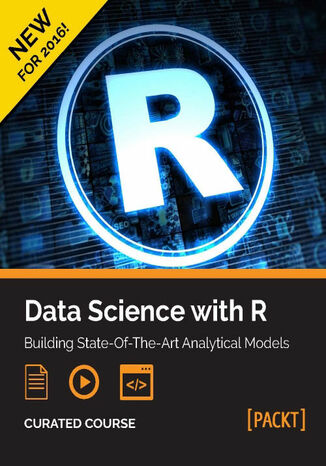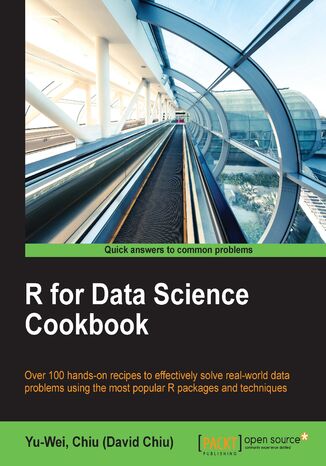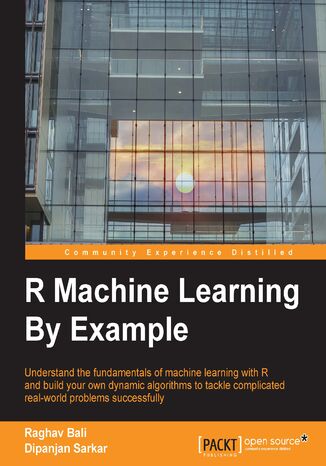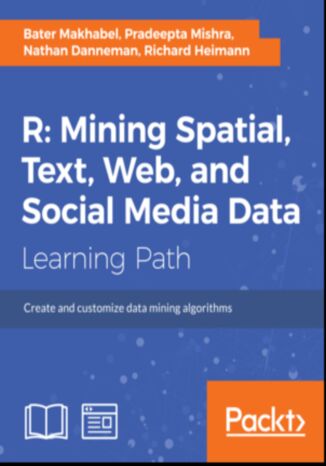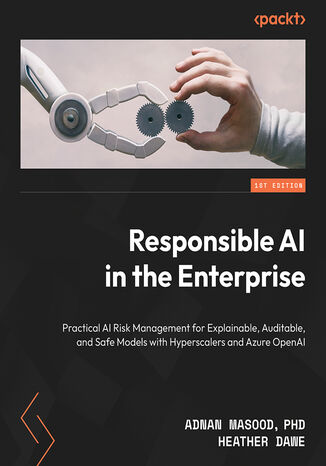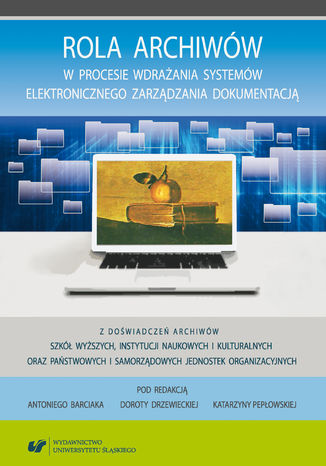Kategorie
Ebooki
-
Biznes i ekonomia
- Bitcoin
- Bizneswoman
- Coaching
- Controlling
- E-biznes
- Ekonomia
- Finanse
- Giełda i inwestycje
- Kompetencje osobiste
- Komputer w biurze
- Komunikacja i negocjacje
- Mała firma
- Marketing
- Motywacja
- Multimedialne szkolenia
- Nieruchomości
- Perswazja i NLP
- Podatki
- Polityka społeczna
- Poradniki
- Prezentacje
- Przywództwo
- Public Relation
- Raporty, analizy
- Sekret
- Social Media
- Sprzedaż
- Start-up
- Twoja kariera
- Zarządzanie
- Zarządzanie projektami
- Zasoby ludzkie (HR)
-
Dla dzieci
-
Dla młodzieży
-
Edukacja
-
Encyklopedie, słowniki
-
E-prasa
- Architektura i wnętrza
- BHP
- Biznes i Ekonomia
- Dom i ogród
- E-Biznes
- Ekonomia i finanse
- Ezoteryka
- Finanse
- Finanse osobiste
- Firma
- Fotografia
- Informatyka
- Kadry i płace
- Kobieca
- Komputery, Excel
- Księgowość
- Kultura i literatura
- Naukowe i akademickie
- Ochrona środowiska
- Opiniotwórcze
- Oświata
- Podatki
- Podróże
- Psychologia
- Religia
- Rolnictwo
- Rynek książki i prasy
- Transport i Spedycja
- Zdrowie i uroda
-
Historia
-
Informatyka
- Aplikacje biurowe
- Bazy danych
- Bioinformatyka
- Biznes IT
- CAD/CAM
- Digital Lifestyle
- DTP
- Elektronika
- Fotografia cyfrowa
- Grafika komputerowa
- Gry
- Hacking
- Hardware
- IT w ekonomii
- Pakiety naukowe
- Podręczniki szkolne
- Podstawy komputera
- Programowanie
- Programowanie mobilne
- Serwery internetowe
- Sieci komputerowe
- Start-up
- Systemy operacyjne
- Sztuczna inteligencja
- Technologia dla dzieci
- Webmasterstwo
-
Inne
-
Języki obce
-
Kultura i sztuka
-
Lektury szkolne
-
Literatura
- Antologie
- Ballada
- Biografie i autobiografie
- Dla dorosłych
- Dramat
- Dzienniki, pamiętniki, listy
- Epos, epopeja
- Esej
- Fantastyka i science-fiction
- Felietony
- Fikcja
- Humor, satyra
- Inne
- Klasyczna
- Kryminał
- Literatura faktu
- Literatura piękna
- Mity i legendy
- Nobliści
- Nowele
- Obyczajowa
- Okultyzm i magia
- Opowiadania
- Pamiętniki
- Podróże
- Poemat
- Poezja
- Polityka
- Popularnonaukowa
- Powieść
- Powieść historyczna
- Proza
- Przygodowa
- Publicystyka
- Reportaż
- Romans i literatura obyczajowa
- Sensacja
- Thriller, Horror
- Wywiady i wspomnienia
-
Nauki przyrodnicze
-
Nauki społeczne
-
Podręczniki szkolne
-
Popularnonaukowe i akademickie
- Archeologia
- Bibliotekoznawstwo
- Filmoznawstwo
- Filologia
- Filologia polska
- Filozofia
- Finanse i bankowość
- Geografia
- Gospodarka
- Handel. Gospodarka światowa
- Historia i archeologia
- Historia sztuki i architektury
- Kulturoznawstwo
- Lingwistyka
- Literaturoznawstwo
- Logistyka
- Matematyka
- Medycyna
- Nauki humanistyczne
- Pedagogika
- Pomoce naukowe
- Popularnonaukowa
- Pozostałe
- Psychologia
- Socjologia
- Teatrologia
- Teologia
- Teorie i nauki ekonomiczne
- Transport i spedycja
- Wychowanie fizyczne
- Zarządzanie i marketing
-
Poradniki
-
Poradniki do gier
-
Poradniki zawodowe i specjalistyczne
-
Prawo
- BHP
- Historia
- Kodeks drogowy. Prawo jazdy
- Nauki prawne
- Ochrona zdrowia
- Ogólne, kompendium wiedzy
- Podręczniki akademickie
- Pozostałe
- Prawo budowlane i lokalowe
- Prawo cywilne
- Prawo finansowe
- Prawo gospodarcze
- Prawo gospodarcze i handlowe
- Prawo karne
- Prawo karne. Przestępstwa karne. Kryminologia
- Prawo międzynarodowe
- Prawo międzynarodowe i zagraniczne
- Prawo ochrony zdrowia
- Prawo oświatowe
- Prawo podatkowe
- Prawo pracy i ubezpieczeń społecznych
- Prawo publiczne, konstytucyjne i administracyjne
- Prawo rodzinne i opiekuńcze
- Prawo rolne
- Prawo socjalne, prawo pracy
- Prawo Unii Europejskiej
- Przemysł
- Rolne i ochrona środowiska
- Słowniki i encyklopedie
- Zamówienia publiczne
- Zarządzanie
-
Przewodniki i podróże
- Afryka
- Albumy
- Ameryka Południowa
- Ameryka Środkowa i Północna
- Australia, Nowa Zelandia, Oceania
- Austria
- Azja
- Bałkany
- Bliski Wschód
- Bułgaria
- Chiny
- Chorwacja
- Czechy
- Dania
- Egipt
- Estonia
- Europa
- Francja
- Góry
- Grecja
- Hiszpania
- Holandia
- Islandia
- Litwa
- Łotwa
- Mapy, Plany miast, Atlasy
- Miniprzewodniki
- Niemcy
- Norwegia
- Podróże aktywne
- Polska
- Portugalia
- Pozostałe
- Przewodniki po hotelach i restauracjach
- Rosja
- Rumunia
- Słowacja
- Słowenia
- Szwajcaria
- Szwecja
- Świat
- Turcja
- Ukraina
- Węgry
- Wielka Brytania
- Włochy
-
Psychologia
- Filozofie życiowe
- Kompetencje psychospołeczne
- Komunikacja międzyludzka
- Mindfulness
- Ogólne
- Perswazja i NLP
- Psychologia akademicka
- Psychologia duszy i umysłu
- Psychologia pracy
- Relacje i związki
- Rodzicielstwo i psychologia dziecka
- Rozwiązywanie problemów
- Rozwój intelektualny
- Sekret
- Seksualność
- Uwodzenie
- Wygląd i wizerunek
- Życiowe filozofie
-
Religia
-
Sport, fitness, diety
-
Technika i mechanika
Audiobooki
-
Biznes i ekonomia
- Bitcoin
- Bizneswoman
- Coaching
- Controlling
- E-biznes
- Ekonomia
- Finanse
- Giełda i inwestycje
- Kompetencje osobiste
- Komunikacja i negocjacje
- Mała firma
- Marketing
- Motywacja
- Nieruchomości
- Perswazja i NLP
- Podatki
- Polityka społeczna
- Poradniki
- Prezentacje
- Przywództwo
- Public Relation
- Sekret
- Social Media
- Sprzedaż
- Start-up
- Twoja kariera
- Zarządzanie
- Zarządzanie projektami
- Zasoby ludzkie (HR)
-
Dla dzieci
-
Dla młodzieży
-
Edukacja
-
Encyklopedie, słowniki
-
E-prasa
-
Historia
-
Informatyka
-
Inne
-
Języki obce
-
Kultura i sztuka
-
Lektury szkolne
-
Literatura
- Antologie
- Ballada
- Biografie i autobiografie
- Dla dorosłych
- Dramat
- Dzienniki, pamiętniki, listy
- Epos, epopeja
- Esej
- Fantastyka i science-fiction
- Felietony
- Fikcja
- Humor, satyra
- Inne
- Klasyczna
- Kryminał
- Literatura faktu
- Literatura piękna
- Mity i legendy
- Nobliści
- Nowele
- Obyczajowa
- Okultyzm i magia
- Opowiadania
- Pamiętniki
- Podróże
- Poezja
- Polityka
- Popularnonaukowa
- Powieść
- Powieść historyczna
- Proza
- Przygodowa
- Publicystyka
- Reportaż
- Romans i literatura obyczajowa
- Sensacja
- Thriller, Horror
- Wywiady i wspomnienia
-
Nauki przyrodnicze
-
Nauki społeczne
-
Popularnonaukowe i akademickie
-
Poradniki
-
Poradniki zawodowe i specjalistyczne
-
Prawo
-
Przewodniki i podróże
-
Psychologia
- Filozofie życiowe
- Komunikacja międzyludzka
- Mindfulness
- Ogólne
- Perswazja i NLP
- Psychologia akademicka
- Psychologia duszy i umysłu
- Psychologia pracy
- Relacje i związki
- Rodzicielstwo i psychologia dziecka
- Rozwiązywanie problemów
- Rozwój intelektualny
- Sekret
- Seksualność
- Uwodzenie
- Wygląd i wizerunek
- Życiowe filozofie
-
Religia
-
Sport, fitness, diety
-
Technika i mechanika
Kursy video
-
Bazy danych
-
Big Data
-
Biznes, ekonomia i marketing
-
Cyberbezpieczeństwo
-
Data Science
-
DevOps
-
Dla dzieci
-
Elektronika
-
Grafika/Wideo/CAX
-
Gry
-
Microsoft Office
-
Narzędzia programistyczne
-
Programowanie
-
Rozwój osobisty
-
Sieci komputerowe
-
Systemy operacyjne
-
Testowanie oprogramowania
-
Urządzenia mobilne
-
UX/UI
-
Web development
-
Zarządzanie
Podcasty
- Ebooki
- Bazy danych
- Inne
Inne
Principles of Data Science bridges mathematics, programming, and business analysis, empowering you to confidently pose and address complex data questions and construct effective machine learning pipelines. This book will equip you with the tools to transform abstract concepts and raw statistics into actionable insights.Starting with cleaning and preparation, you’ll explore effective data mining strategies and techniques before moving on to building a holistic picture of how every piece of the data science puzzle fits together. Throughout the book, you’ll discover statistical models with which you can control and navigate even the densest or the sparsest of datasets and learn how to create powerful visualizations that communicate the stories hidden in your data.With a focus on application, this edition covers advanced transfer learning and pre-trained models for NLP and vision tasks. You’ll get to grips with advanced techniques for mitigating algorithmic bias in data as well as models and addressing model and data drift. Finally, you’ll explore medium-level data governance, including data provenance, privacy, and deletion request handling.By the end of this data science book, you'll have learned the fundamentals of computational mathematics and statistics, all while navigating the intricacies of modern ML and large pre-trained models like GPT and BERT.
Principles of Data Science. Mathematical techniques and theory to succeed in data-driven industries
Need to turn your skills at programming into effective data science skills? Principles of Data Science is created to help you join the dots between mathematics, programming, and business analysis. With this book, you’ll feel confident about asking—and answering—complex and sophisticated questions of your data to move from abstract and raw statistics to actionable ideas.With a unique approach that bridges the gap between mathematics and computer science, this books takes you through the entire data science pipeline. Beginning with cleaning and preparing data, and effective data mining strategies and techniques, you’ll move on to build a comprehensive picture of how every piece of the data science puzzle fits together. Learn the fundamentals of computational mathematics and statistics, as well as some pseudocode being used today by data scientists and analysts. You’ll get to grips with machine learning, discover the statistical models that help you take control and navigate even the densest datasets, and find out how to create powerful visualizations that communicate what your data means.
Sinan Ozdemir, Sunil Kakade, Marco Tibaldeschi
Need to turn programming skills into effective data science skills? This book helps you connect mathematics, programming, and business analysis. You’ll feel confident asking—and answering—complex, sophisticated questions of your data, making abstract and raw statistics into actionable ideas.Going through the data science pipeline, you'll clean and prepare data and learn effective data mining strategies and techniques to gain a comprehensive view of how the data science puzzle fits together. You’ll learn fundamentals of computational mathematics and statistics and pseudo-code used by data scientists and analysts. You’ll learn machine learning, discovering statistical models that help control and navigate even the densest datasets, and learn powerful visualizations that communicate what your data means.
Tomasz Palczewski, Jaejun (Brandon) Lee, Lenin Mookiah
Machine learning engineers, deep learning specialists, and data engineers encounter various problems when moving deep learning models to a production environment. The main objective of this book is to close the gap between theory and applications by providing a thorough explanation of how to transform various models for deployment and efficiently distribute them with a full understanding of the alternatives.First, you will learn how to construct complex deep learning models in PyTorch and TensorFlow. Next, you will acquire the knowledge you need to transform your models from one framework to the other and learn how to tailor them for specific requirements that deployment environments introduce. The book also provides concrete implementations and associated methodologies that will help you apply the knowledge you gain right away. You will get hands-on experience with commonly used deep learning frameworks and popular cloud services designed for data analytics at scale. Additionally, you will get to grips with the authors’ collective knowledge of deploying hundreds of AI-based services at a large scale.By the end of this book, you will have understood how to convert a model developed for proof of concept into a production-ready application optimized for a particular production setting.
Projektowanie baz danych dla każdego. Przewodnik krok po kroku
Praktyczny przewodnik dla projektantów baz danych! Dzisiejszy świat opiera się na bazach danych. Są one sercem każdego przedsięwzięcia, począwszy od działalności banku, a na zakupach internetowych skończywszy. Ich projektowanie wymaga nie lada kunsztu, a drobny błąd może doprowadzić do nieoczekiwanych konsekwencji. Dlatego od projektantów baz danych wymaga się ogromnej wiedzy i dokładności, a doświadczenie w tej dziedzinie zdobywa się latami. Dzięki tej książce będziesz w stanie zgłębić tajniki budowy baz danych, podane w przejrzysty, przystępny i rozsądny sposób. W trakcie lektury poznasz rodzaje baz, ich dostępne modele oraz cel ich projektowania. Kolejne rozdziały dotyczą procesu projektowania nowej bazy oraz analizowania baz istniejących. Ponadto dowiesz się z nich, jak istotne jest właściwe określenie kluczy i relacji oraz nałożenie więzów integralności. Szczególną uwagę powinieneś zwrócić na rozdział poświęcony najczęściej popełnianym błędom - jego dokładna lektura pozwoli Ci uniknąć wielu problemów. Książka ta jest obowiązkową lekturą dla wszystkich osób mających styczność z bazami danych w codziennej pracy. Dzięki tej książce: poznasz rodzaje baz danych zorganizujesz proces projektowania bazy nauczysz się analizować strukturę istniejącej bazy unikniesz pułapek poznasz tajniki baz danych Wiedza dotycząca baz danych w pigułce!
Projektowanie baz danych dla każdego. Przewodnik krok po kroku. Wydanie IV
Mimo upływu lat relacyjne bazy danych wciąż mają się świetnie! Z każdym rokiem stają się coraz doskonalsze i radzą sobie z coraz większymi zbiorami danych. Wciąż jednak podstawą dobrej aplikacji bazodanowej jest dobry projekt samej bazy. Wielu osobom projektowanie poprawnych struktur bazodanowych wydaje się czymś z pogranicza wyższej matematyki i czarnej magii. Tymczasem zdobycie tej umiejętności jest możliwe bez lat studiowania skomplikowanych teorii matematycznych. Wystarczy przyswoić kluczowe podstawy i nauczyć się korzystać z kilku zdroworozsądkowych koncepcji i teorii. Ta książka jest rocznicowym, przejrzanym i zaktualizowanym wydaniem kultowego podręcznika do samodzielnej nauki projektowania relacyjnych baz danych. Zawarte w nim informacje można wykorzystywać niezależnie od zastosowanego oprogramowania. Przedstawiono tu, jak projektować nowoczesne bazy danych, które mają poprawną strukturę, są niezawodne i ułatwiają wprowadzanie zmian. Opisano wszystkie etapy projektowania: od planowania po definiowanie tabel, pól, kluczy, relacji między tabelami, reguł biznesowych i widoków. Dodatkowo znajdziemy tu praktyczne techniki zwiększania integralności danych, omówienie często popełnianych błędów i wskazówki, kiedy warto łamać zasady. Treść przewodnika wzbogacają pytania kontrolne i rysunki, które bardzo pomagają w jej skutecznym opanowaniu. W książce: typy baz danych, modele i cele projektowe tworzenie tabel i relacji, specyfikacje pól i widoki poziomy integralności danych tworzenie reguł biznesowych perspektywy relacyjnych baz danych Nie ma dobrej bazy danych bez dobrego projektu!
Prywatność danych w praktyce. Skuteczna ochrona prywatności i bezpieczeństwa danych
Chyba nikogo nie trzeba przekonywać, że ochrona danych i zabezpieczenie prywatności są kwestiami absolutnie kluczowymi w cyfrowym świecie. Na szczęście zdajemy sobie coraz lepiej sprawę, że incydenty naruszeń w dziedzinie bezpieczeństwa danych mogą nas narazić na realne szkody. Z drugiej strony niedopełnienie obowiązków wynikających z RODO okazuje się dla organizacji niezwykle kosztowne, a także naraża na szwank ich wizerunek. Zapewnienie należytej ochrony danych to wymagające wyzwanie. Z tego względu inżynieria prywatności z roku na rok staje się coraz ważniejszą dziedziną. Książka w przystępny sposób przedstawia głęboką perspektywę techniczną wraz z przeglądem najnowszych podejść i architektur technologicznych. Emily F. Gorcenski, główna analityczka danych, Thoughtworks Tę książkę docenią osoby, które w ramach codziennej pracy integrują tematy związane z prywatnością i bezpieczeństwem danych. To przewodnik dla pragmatyków, zapewniający gruntowną wiedzę o współczesnych elementach ochrony danych, takich jak prywatność różnicowa, uczenie federacyjne i obliczenia szyfrowane. Znajdziesz tu przydatne wskazówki, jak również najlepsze, wielokrotnie sprawdzone praktyki integracji przełomowych technologii, pozwalające skutecznie i na wysokim poziomie dbać o prywatność i bezpieczeństwo danych. Najważniejsze zagadnienia: Jak przepisy (RODO i CCPA) mają się do przepływów danych i przypadków ich użycia? Jak właściwie anonimizować dane? Czy szyfrowanie homomorficzne jest właściwym rozwiązaniem? Jak wybierać technologie i metody ochrony prywatności? Jak zapewnić bezpieczeństwo danych w projektach opartych na ich analizie? Jak odpowiednio wdrożyć wewnętrzne zasady ochrony prywatności danych? Wreszcie znalazłem książkę, którą mogę polecać wszystkim unikającym tematu prywatności danych! Vincent Warmerdam, twórca Calm Code, inżynier uczenia maszynowego, Explosion
Przewodnik po MongoDB. Wydajna i skalowalna baza danych. Wydanie III
Shannon Bradshaw, Eoin Brazil, Kristina Chodorow
MongoDB jest wieloplatformowym, nierelacyjnym systemem do obsługi baz danych, napisanym w języku C++. Nie przypomina ściśle ustrukturyzowanych relacyjnych baz danych, zamiast tego korzysta z dokumentów w formacie BSON. Ułatwia to bardziej naturalne przetwarzanie informacji w aplikacjach, oczywiście przy zachowaniu możliwości tworzenia hierarchii oraz indeksowania. W ten sposób cały system zyskuje na wydajności, co jest szczególnie istotne przy przetwarzaniu bardzo dużych zbiorów danych. MongoDB umożliwia stosowanie elastycznych modeli danych, uzyskiwanie wysokiego poziomu dostępności i poziome skalowanie. Ten praktyczny przewodnik jest przeznaczony dla użytkowników bazy MongoDB w wersji 4.2. W przystępny i konkretny sposób opisuje zalety stosowania dokumentowych baz danych, równocześnie wskazuje zaawansowane metody konfiguracji systemu oraz możliwe zastosowania w różnych projektach. Książka zainteresuje zarówno użytkowników i administratorów MongoDB, jak i programistów tworzących złożone aplikacje. Przedstawia kwestie tworzenia zapytań, indeksów, agregacji, transakcji, zbiorów replik, zarządzania systemem, shardingu i administrowania danymi, trwałości danych, monitorowania systemu oraz jego zabezpieczenia. Znalazło się tu także wprowadzenie do pracy z MongoDB, omówiono też zasady pracy z klastrem shardów oraz administrowania aplikacją i serwerem bazy MongoDB. W książce między innymi: ogólne zasady pracy z MongoDB operacje zapisu i wyszukiwania oraz tworzenie złożonych zapytań indeksy w kolekcjach, agregowanie danych i transakcje lokalny zbiór replik i korzystanie z replikacji konfiguracja elementów klastra monitorowanie systemu, kopie bezpieczeństwa i odtwarzanie bazy MongoDB MongoDB - przekonaj się na własnym systemie!
Python Data Analysis Cookbook. Clean, scrape, analyze, and visualize data with the power of Python!
Data analysis is a rapidly evolving field and Python is a multi-paradigm programming language suitable for object-oriented application development and functional design patterns. As Python offers a range of tools and libraries for all purposes, it has slowly evolved as the primary language for data science, including topics on: data analysis, visualization, and machine learning.Python Data Analysis Cookbook focuses on reproducibility and creating production-ready systems. You will start with recipes that set the foundation for data analysis with libraries such as matplotlib, NumPy, and pandas. You will learn to create visualizations by choosing color maps and palettes then dive into statistical data analysis using distribution algorithms and correlations. You’ll then help you find your way around different data and numerical problems, get to grips with Spark and HDFS, and then set up migration scripts for web mining.In this book, you will dive deeper into recipes on spectral analysis, smoothing, and bootstrapping methods. Moving on, you will learn to rank stocks and check market efficiency, then work with metrics and clusters. You will achieve parallelism to improve system performance by using multiple threads and speeding up your code.By the end of the book, you will be capable of handling various data analysis techniques in Python and devising solutions for problem scenarios.
Martin Czygan, Phuong Vo.T.H, Ashish Kumar, Kirthi Raman
You will start the course with an introduction to the principles of data analysis and supported libraries, along with NumPy basics for statistics and data processing. Next, you will overview the Pandas package and use its powerful features to solve data-processing problems. Moving on, you will get a brief overview of the Matplotlib API .Next, you will learn to manipulate time and data structures, and load and store data in a file or database using Python packages. You will learn how to apply powerful packages in Python to process raw data into pure and helpful data using examples. You will also get a brief overview of machine learning algorithms, that is, applying data analysis results to make decisions or building helpful products such as recommendations and predictions using Scikit-learn. After this, you will move on to a data analytics specialization—predictive analytics. Social media and IOT have resulted in an avalanche of data. You will get started with predictive analytics using Python. You will see how to create predictive models from data. You will get balanced information on statistical and mathematical concepts, and implement them in Python using libraries such as Pandas, scikit-learn, and NumPy. You’ll learn more about the best predictive modeling algorithms such as Linear Regression, Decision Tree, and Logistic Regression. Finally, you will master best practices in predictive modeling.After this, you will get all the practical guidance you need to help you on the journey to effective data visualization. Starting with a chapter on data frameworks, which explains the transformation of data into information and eventually knowledge, this path subsequently cover the complete visualization process using the most popular Python libraries with working examplesThis Learning Path combines some of the best that Packt has to offer in one complete, curated package. It includes content from the following Packt products:? Getting Started with Python Data Analysis, Phuong Vo.T.H &Martin Czygan•Learning Predictive Analytics with Python, Ashish Kumar•Mastering Python Data Visualization, Kirthi Raman
Python Data Science Essentials. Learn the fundamentals of Data Science with Python - Second Edition
Alberto Boschetti, Luca Massaron
Fully expanded and upgraded, the second edition of Python Data Science Essentials takes you through all you need to know to suceed in data science using Python. Get modern insight into the core of Python data, including the latest versions of Jupyter notebooks, NumPy, pandas and scikit-learn. Look beyond the fundamentals with beautiful data visualizations with Seaborn and ggplot, web development with Bottle, and even the new frontiers of deep learning with Theano and TensorFlow. Dive into building your essential Python 3.5 data science toolbox, using a single-source approach that will allow to to work with Python 2.7 as well. Get to grips fast with data munging and preprocessing, and all the techniques you need to load, analyse, and process your data. Finally, get a complete overview of principal machine learning algorithms, graph analysis techniques, and all the visualization and deployment instruments that make it easier to present your results to an audience of both data science experts and business users.
Feature engineering, the process of transforming variables and creating features, albeit time-consuming, ensures that your machine learning models perform seamlessly. This second edition of Python Feature Engineering Cookbook will take the struggle out of feature engineering by showing you how to use open source Python libraries to accelerate the process via a plethora of practical, hands-on recipes.This updated edition begins by addressing fundamental data challenges such as missing data and categorical values, before moving on to strategies for dealing with skewed distributions and outliers. The concluding chapters show you how to develop new features from various types of data, including text, time series, and relational databases. With the help of numerous open source Python libraries, you'll learn how to implement each feature engineering method in a performant, reproducible, and elegant manner.By the end of this Python book, you will have the tools and expertise needed to confidently build end-to-end and reproducible feature engineering pipelines that can be deployed into production.
Machine learning is becoming increasingly pervasive in the modern data-driven world. It is used extensively across many fields such as search engines, robotics, self-driving cars, and more. With this book, you will learn how to perform various machine learning tasks in different environments. We’ll start by exploring a range of real-life scenarios where machine learning can be used, and look at various building blocks. Throughout the book, you’ll use a wide variety of machine learning algorithms to solve real-world problems and use Python to implement these algorithms. You’ll discover how to deal with various types of data and explore the differences between machine learning paradigms such as supervised and unsupervised learning. We also cover a range of regression techniques, classification algorithms, predictive modeling, data visualization techniques, recommendation engines, and more with the help of real-world examples.
Python: Real World Machine Learning. Take your Python Machine learning skills to the next level
Prateek Joshi, Luca Massaron, John Hearty, Alberto Boschetti, ...
Machine learning is increasingly spreading in the modern data-driven world. It is used extensively across many fields such as search engines, robotics, self-driving cars, and more. Machine learning is transforming the way we understand and interact with the world around us.In the first module, Python Machine Learning Cookbook, you will learn how to perform various machine learning tasks using a wide variety of machine learning algorithms to solve real-world problems and use Python to implement these algorithms.The second module, Advanced Machine Learning with Python, is designed to take you on a guided tour of the most relevant and powerful machine learning techniques and you’ll acquire a broad set of powerful skills in the area of feature selection and feature engineering.The third module in this learning path, Large Scale Machine Learning with Python, dives into scalable machine learning and the three forms of scalability. It covers the most effective machine learning techniques on a map reduce framework in Hadoop and Spark in Python.This Learning Path will teach you Python machine learning for the real world. The machine learning techniques covered in this Learning Path are at the forefront of commercial practice.This Learning Path combines some of the best that Packt has to offer in one complete, curated package. It includes content from the following Packt products:? Python Machine Learning Cookbook by Prateek Joshi? Advanced Machine Learning with Python by John Hearty? Large Scale Machine Learning with Python by Bastiaan Sjardin, Alberto Boschetti, Luca Massaron
Miguel Garc?É?íÂ!!=a, Barry Harmsen, Miguel Angel Garcia
Business Intelligence technologies are a must-have in every business to make informed decisions and keep up-to speed with the ever-evolving markets. QlikView's disruptive technology makes it a key player and leader in the industry; with its flexibility and powerful analytics environment, building QlikView apps can be mastered by both, business users as well as developers.This book will help you learn QlikView Development from a basic to a practitioner level using a step-by-step approach in a practical environment, and apply proven best practices on each topic.Throughout the book, we will build a QlikView app based on real data about Airline Operations that will help HighCloud Airlines make informed business decisions and analysis-guided strategies. HighCloud Airlines executives are evaluating if entering the US market is a good strategy and, if so, which line of business should they focus their investments on; they need QlikView to make the best decision.The application will be evolving chapter by chapter, along with your skills, going from a simple proof of concept to creating a Data Model, adding a custom style, building a Dashboard and handling and manipulating the source data via script. We will meet the HighCloud Airlines requirement by using many different data visualization objects and time-saving techniques.The whole application uses real data taken from the Bureau of Transportations statistics of the US and encompasses the operations of Airlines both domestic and international. With three years worth of data, you will help HighCloud Airlines discover where people travel the most, which are the Carriers with the most market share, what is the average load factor per airline, which aircraft is the most used to perform flights, which are the busiest airports, and a whole universe of new insights.
This guide demonstrates just how easy it is to get started with QlikView and create your own BI application. Featuring an introduction to its core features before exploring how to load data and model it, you’ll soon become more confident that you can take full advantage of QlikView’s capabilities.. You will also learn how to use QVD files with QlikView – and how they offer a simpler way of handling data.After digging deeper into data handling, as you learn how to use mapping tables and create a master calendar, you’ll then find out how to get the most from QlikView’s visualization features – vital if you are to use your data insights effectively. From accessible and user friendly dashboards to strategies and best practices for subjecting data to further analysis, you can be confident that you’ll be prepared to get the most out of your data with QlikView.With details on how to finally secure your application and deploy it for a successful integration in your organization, QlikView Essentials underlines exactly why QlikView is becoming more and more popular for businesses that understand the value of data.
QlikView Unlocked. Unlock more than 50 amazing tips and tricks to enhance your QlikView skills
QlikView Unlocked will provide you with new insights to get the very best from QlikView. This book will help you to develop skills to work with data efficiently. We will cover all the secrets of unleashing the full power of QlikView, which will enable you to make better use of the tool and create better results for future projects. In the course of this book, we will walk you through techniques and best practices that will enable you to be more productive. You will gain quick insights into the tool with the help of short steps called ”keys,” which will help you discover new features of QlikView. Moving on you will learn new techniques for data visualization, scripting, data modeling, and more. This book will then cover best practices to help you establish an efficient system with improved performance. We will also teach you some tricks that will help you speed up development processes, monitor data with dashboards, and so on.By the end of this book, you will have gained beneficial tips, tricks, and techniques to enhance the overall experience of working with QlikView.
R: Data Analysis and Visualization. Click here to enter text
Tony Fischetti, Brett Lantz, Jaynal Abedin, Hrishi V. Mittal, ...
The R learning path created for you has five connected modules, which are a mini-course in their own right. As you complete each one, you'll have gained key skills and be ready for the material in the next module!This course begins by looking at the Data Analysis with R module. This will help you navigate the R environment. You'll gain a thorough understanding of statistical reasoning and sampling. Finally, you'll be able to put best practices into effect to make your job easier and facilitate reproducibility.The second place to explore is R Graphs, which will help you leverage powerful default R graphics and utilize advanced graphics systems such as lattice and ggplot2, the grammar of graphics. You'll learn how to produce, customize, and publish advanced visualizations using this popular and powerful framework.With the third module, Learning Data Mining with R, you will learn how to manipulate data with R using code snippets and be introduced to mining frequent patterns, association, and correlations while working with R programs.The Mastering R for Quantitative Finance module pragmatically introduces both the quantitative finance concepts and their modeling in R, enabling you to build a tailor-made trading system on your own. By the end of the module, you will be well-versed with various financial techniques using R and will be able to place good bets while making financial decisions.Finally, we'll look at the Machine Learning with R module. With this module, you'll discover all the analytical tools you need to gain insights from complex data and learn how to choose the correct algorithm for your specific needs. You'll also learn to apply machine learning methods to deal with common tasks, including classification, prediction, forecasting, and so on.
This cookbook offers a range of data analysis samples in simple and straightforward R code, providing step-by-step resources and time-saving methods to help you solve data problems efficiently.The first section deals with how to create R functions to avoid the unnecessary duplication of code. You will learn how to prepare, process, and perform sophisticated ETL for heterogeneous data sources with R packages. An example of data manipulation is provided, illustrating how to use the “dplyr” and “data.table” packages to efficiently process larger data structures. We also focus on “ggplot2” and show you how to create advanced figures for data exploration.In addition, you will learn how to build an interactive report using the “ggvis” package. Later chapters offer insight into time series analysis on financial data, while there is detailed information on the hot topic of machine learning, including data classification, regression, clustering, association rule mining, and dimension reduction.By the end of this book, you will understand how to resolve issues and will be able to comfortably offer solutions to problems encountered while performing data analysis.
Data science and machine learning are some of the top buzzwords in the technical world today. From retail stores to Fortune 500 companies, everyone is working hard to making machine learning give them data-driven insights to grow their business. With powerful data manipulation features, machine learning packages, and an active developer community, R empowers users to build sophisticated machine learning systems to solve real-world data problems.This book takes you on a data-driven journey that starts with the very basics of R and machine learning and gradually builds upon the concepts to work on projects that tackle real-world problems.You’ll begin by getting an understanding of the core concepts and definitions required to appreciate machine learning algorithms and concepts. Building upon the basics, you will then work on three different projects to apply the concepts of machine learning, following current trends and cover major algorithms as well as popular R packages in detail. These projects have been neatly divided into six different chapters covering the worlds of e-commerce, finance, and social-media, which are at the very core of this data-driven revolution. Each of the projects will help you to understand, explore, visualize, and derive insights depending upon the domain and algorithms.Through this book, you will learn to apply the concepts of machine learning to deal with data-related problems and solve them using the powerful yet simple language, R.
R: Mining spatial, text, web, and social media data. Create and customize data mining algorithms
Nathan H. Danneman, Richard Heimann, Pradeepta Mishra, Bater Makhabel
Data mining is the first step to understanding data and making sense of heaps of data. Properly mined data forms the basis of all data analysis and computing performed on it. This learning path will take you from the very basics of data mining to advanced data mining techniques, and will end up with a specialized branch of data mining—social media mining.You will learn how to manipulate data with R using code snippets and how to mine frequent patterns, association, and correlation while working with R programs. You will discover how to write code for various predication models, stream data, and time-series data. You will also be introduced to solutions written in R based on R Hadoop projects. Now that you are comfortable with data mining with R, you will move on to implementing your knowledge with the help of end-to-end data mining projects. You will learn how to apply different mining concepts to various statistical and data applications in a wide range of fields. At this stage, you will be able to complete complex data mining cases and handle any issues you might encounter during projects.After this, you will gain hands-on experience of generating insights from social media data. You will get detailed instructions on how to obtain, process, and analyze a variety of socially-generated data while providing a theoretical background to accurately interpret your findings. You will be shown R code and examples of data that can be used as a springboard as you get the chance to undertake your own analyses of business, social, or political data.This Learning Path combines some of the best that Packt has to offer in one complete, curated package. It includes content from the following Packt products:? Learning Data Mining with R by Bater Makhabel ? R Data Mining Blueprints by Pradeepta Mishra? Social Media Mining with R by Nathan Danneman and Richard Heimann
Bruce M. Van Horn II, Van Symons
As a software developer, you need to learn new languages and simultaneously get familiarized with the programming paradigms and methods of leveraging patterns, as both a communications tool and an advantage when designing well-written, easy-to-maintain code. Design patterns, being a collection of best practices, provide the necessary wisdom to help you overcome common sets of challenges in object-oriented design and programming.This practical guide to design patterns helps C# developers put their programming knowledge to work. The book takes a hands-on approach to introducing patterns and anti-patterns, elaborating on 14 patterns along with their real-world implementations. Throughout the book, you'll understand the implementation of each pattern, as well as find out how to successfully implement those patterns in C# code within the context of a real-world project.By the end of this design patterns book, you’ll be able to recognize situations that tempt you to reinvent the wheel, and quickly avoid the time and cost associated with solving common and well-understood problems with battle-tested design patterns.
Adnan Masood, Heather Dawe, Ed Price, Dr. Ehsan Adeli
Responsible AI in the Enterprise is a comprehensive guide to implementing ethical, transparent, and compliant AI systems in an organization. With a focus on understanding key concepts of machine learning models, this book equips you with techniques and algorithms to tackle complex issues such as bias, fairness, and model governance. Throughout the book, you’ll gain an understanding of FairLearn and InterpretML, along with Google What-If Tool, ML Fairness Gym, IBM AI 360 Fairness tool, and Aequitas. You’ll uncover various aspects of responsible AI, including model interpretability, monitoring and management of model drift, and compliance recommendations. You’ll gain practical insights into using AI governance tools to ensure fairness, bias mitigation, explainability, privacy compliance, and privacy in an enterprise setting. Additionally, you’ll explore interpretability toolkits and fairness measures offered by major cloud AI providers like IBM, Amazon, Google, and Microsoft, while discovering how to use FairLearn for fairness assessment and bias mitigation. You’ll also learn to build explainable models using global and local feature summary, local surrogate model, Shapley values, anchors, and counterfactual explanations.By the end of this book, you’ll be well-equipped with tools and techniques to create transparent and accountable machine learning models.
red. Antoni Barciak, Dorota Drzewiecka, Katarzyna Pepłowska
Książka omawia trudny proces jakim jest wdrażanie systemów EZD w działalności jednostek organizacyjnych w kontekście informatyzacji państwa. W literaturze naukowej coraz więcej miejsca poświęca się tematyce projektowania i wdrażania systemów do elektronicznego zarządzania dokumentacją. Niestety zbyt mało mówi się o udziale archiwistów, często można odnieść wrażanie, że są oni pomijani w tym ważnym procesie. Z drugiej strony, należy przypomnieć, że wiedza, którą dysponują archiwiści w wielu kwestiach związanych z zarządzaniem dokumentacją pozwoliłaby uniknąć licznych problemów występujących w praktyce. Niniejsza książka wypełnią tę lukę, bowiem koncentruje się na doświadczeniach archiwów i ich roli w procesie wdrażania EZD. Książka jest szerokim spojrzeniem na działalność archiwów. Jest adresowana archiwistom, pracownikom jednostek organizacyjnych, dysponentom oraz studentom. Zawiera w sobie praktyczne wyjaśnienie procesów wdrażania EZD dzięki czemu może stanowić cenne źródło wiedzy dla wszystkich, którzy obecnie zmagają z problemem EZD.

